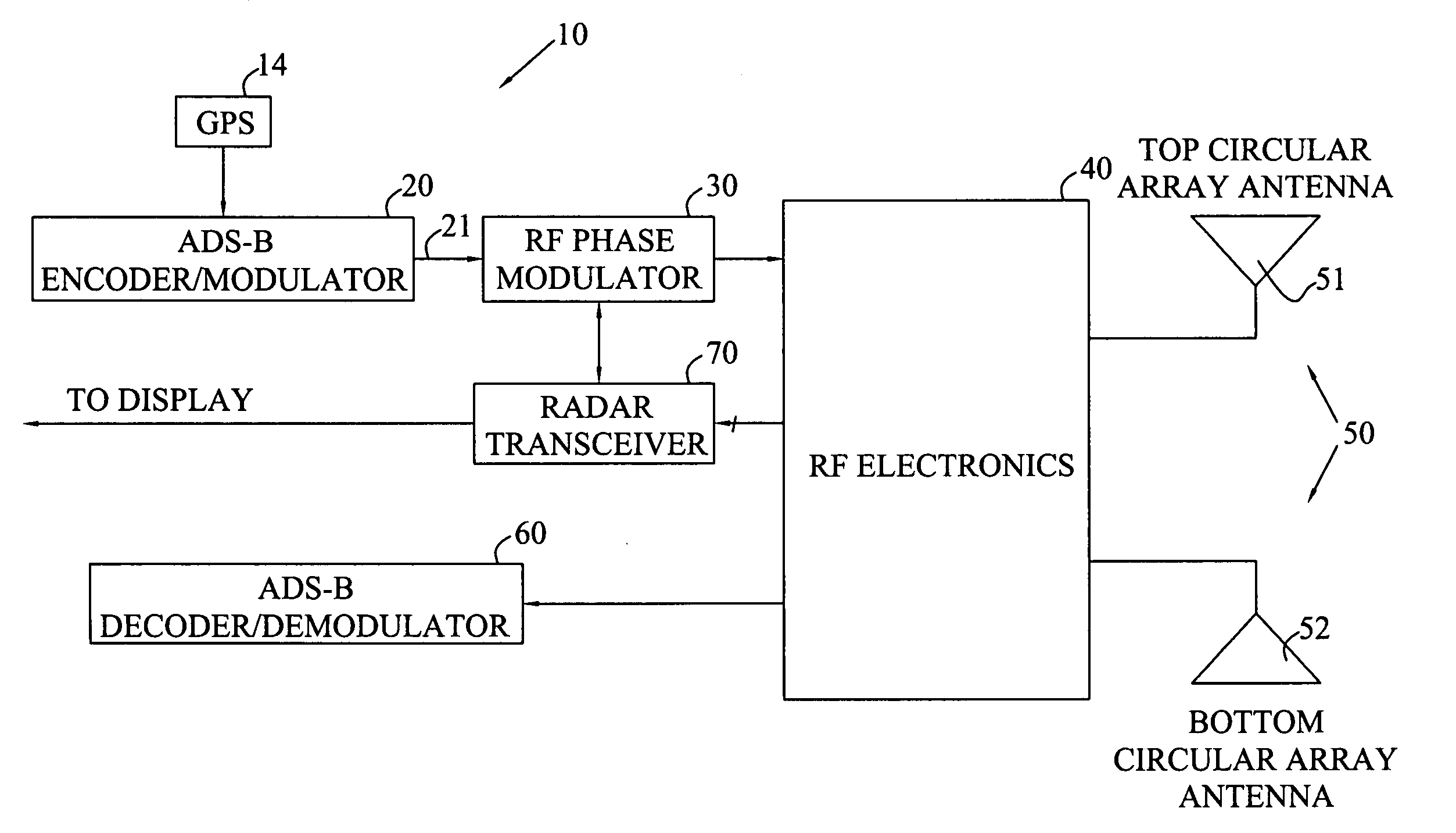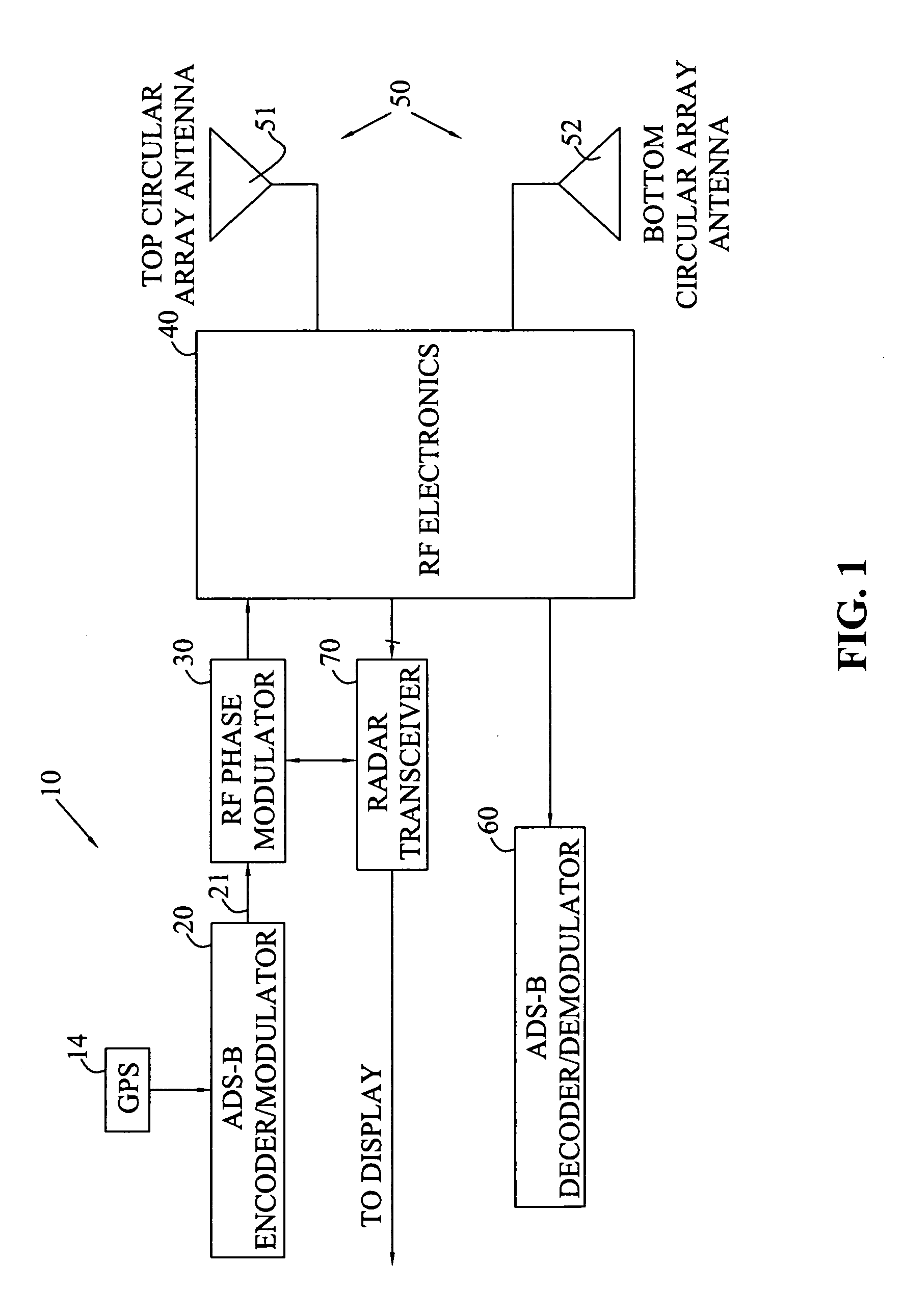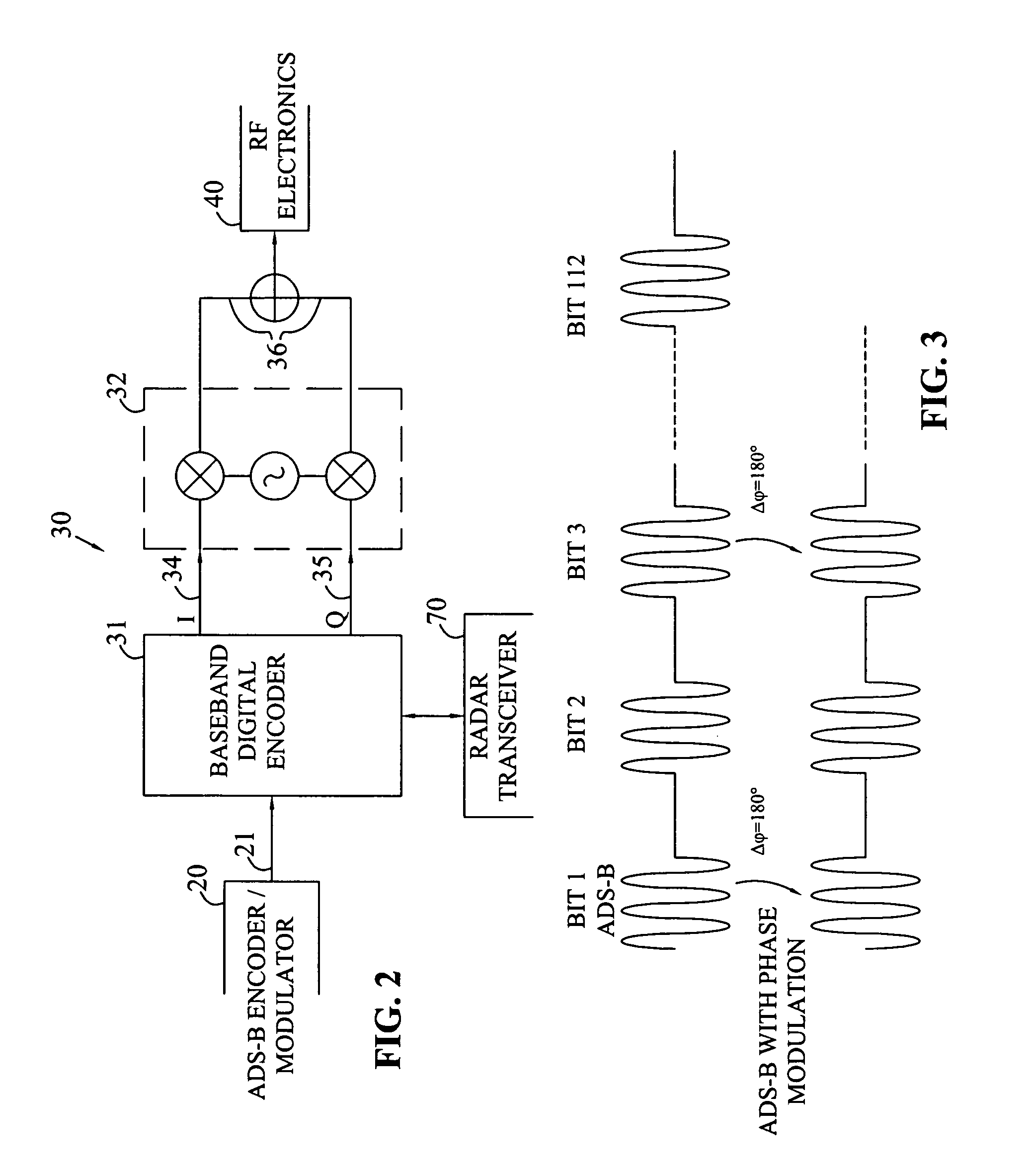Ads-b radar system
a radar system and radar technology, applied in the field of airborne radar systems, can solve the problems of low altitude limitations of land-based primary surveillance radar, inability to work on the ground, and high cost of airborne primary surveillance radar, and achieve the effect of improving the signal-to-noise ratio
- Summary
- Abstract
- Description
- Claims
- Application Information
AI Technical Summary
Benefits of technology
Problems solved by technology
Method used
Image
Examples
Embodiment Construction
[0041]For the purposes of promoting an understanding of the principles of the invention, reference will now be made to the embodiments illustrated in the drawings, which are described below. It will nevertheless be understood that no limitation of the scope of the invention is thereby intended. The invention includes any alterations and further modifications in the illustrated devices and described methods and further applications of the principles of the invention, which would normally occur to one skilled in the art to which the invention relates.
[0042]Now referring to FIG. 1, an airborne radar system to assist with collision avoidance is shown, generally indicated as 10. Radar system 10 utilizes a Global Positioning System (GPS) 14 as is well known to provide information to a standard ADS-B encoder / transmitter / modulator 20. Radar system 10 further includes a radio-frequency phase modulator 30, radio-frequency electronics 40, an antenna system, generally indicated as 50, a standar...
PUM
 Login to View More
Login to View More Abstract
Description
Claims
Application Information
 Login to View More
Login to View More - R&D
- Intellectual Property
- Life Sciences
- Materials
- Tech Scout
- Unparalleled Data Quality
- Higher Quality Content
- 60% Fewer Hallucinations
Browse by: Latest US Patents, China's latest patents, Technical Efficacy Thesaurus, Application Domain, Technology Topic, Popular Technical Reports.
© 2025 PatSnap. All rights reserved.Legal|Privacy policy|Modern Slavery Act Transparency Statement|Sitemap|About US| Contact US: help@patsnap.com



